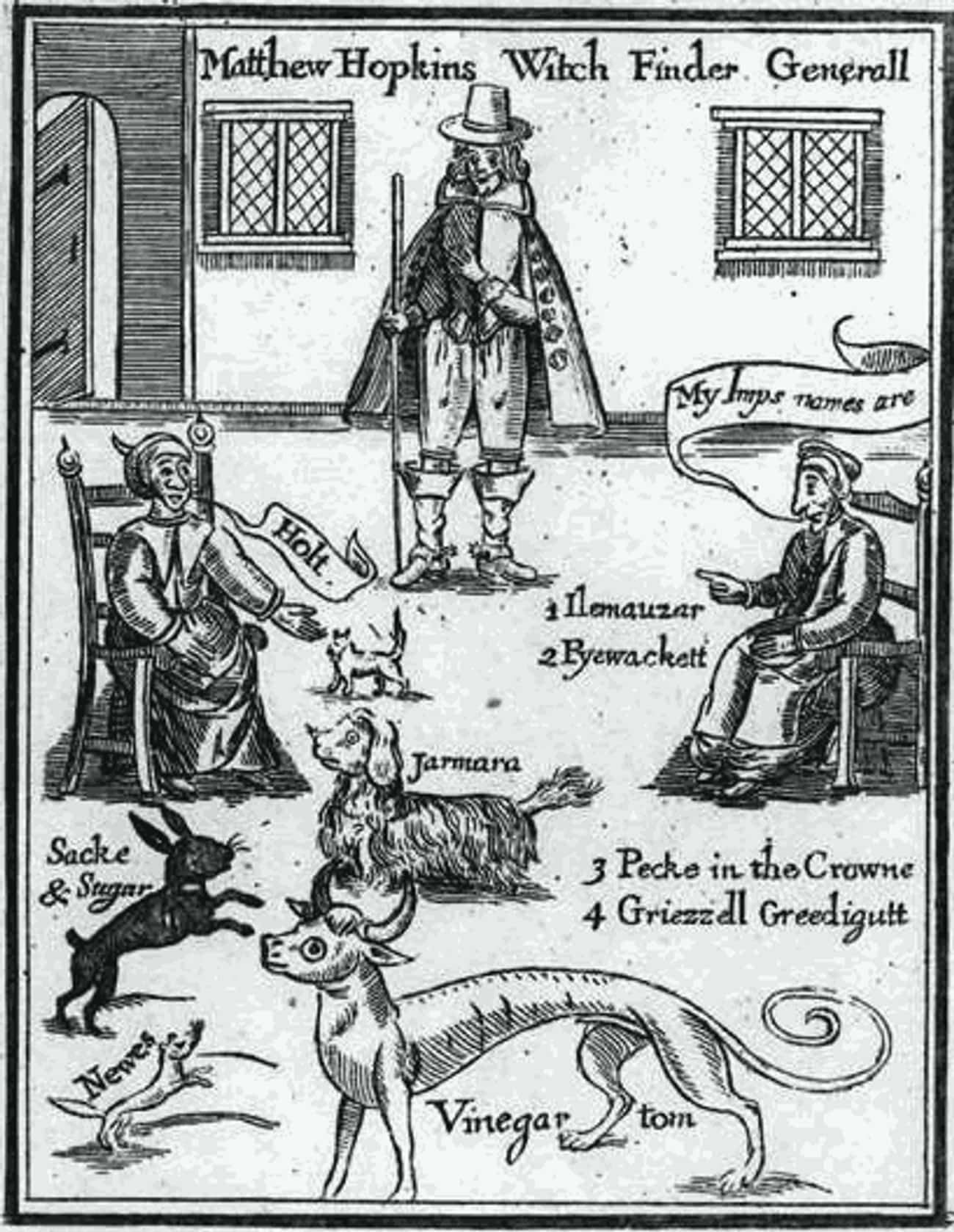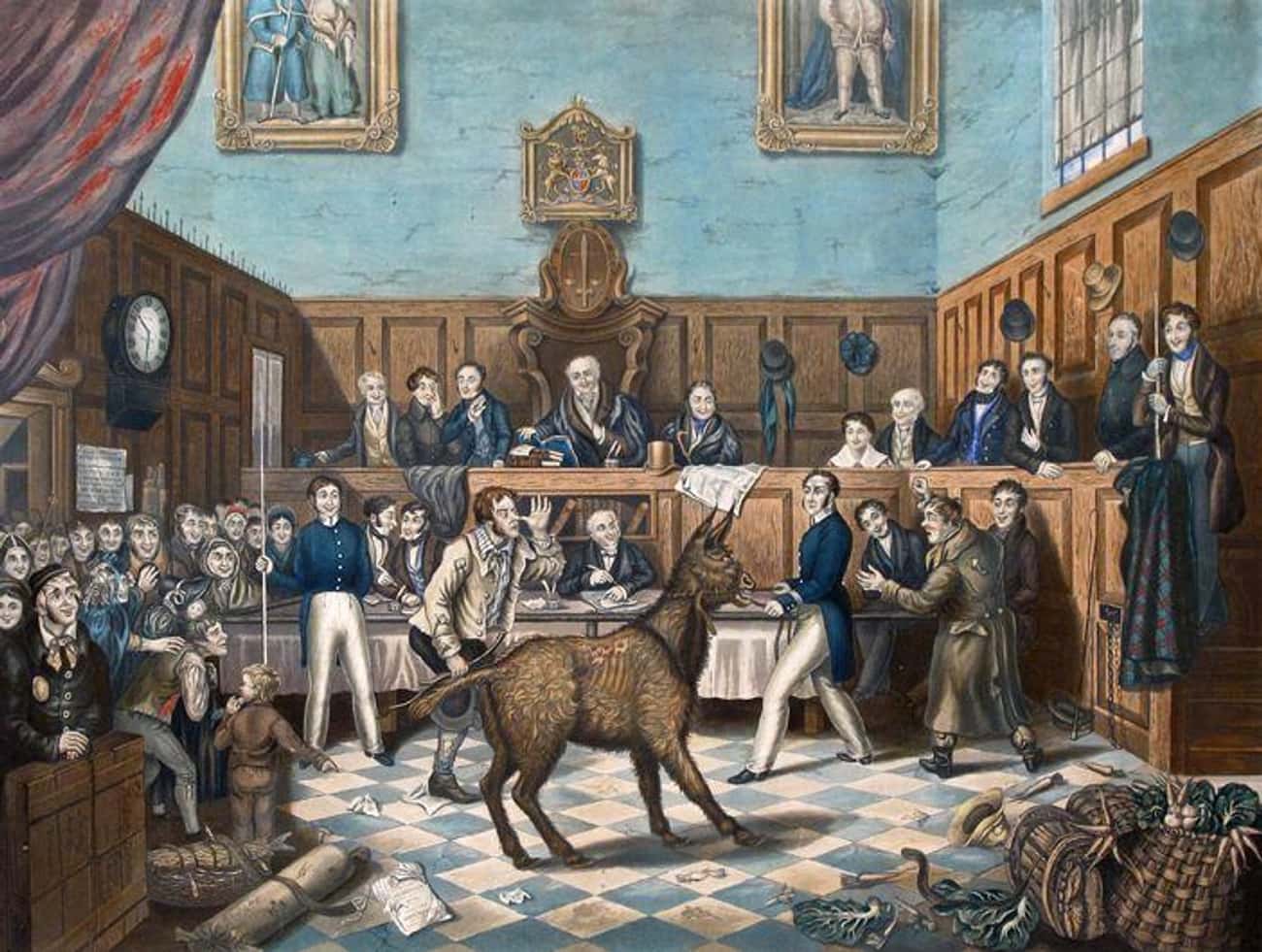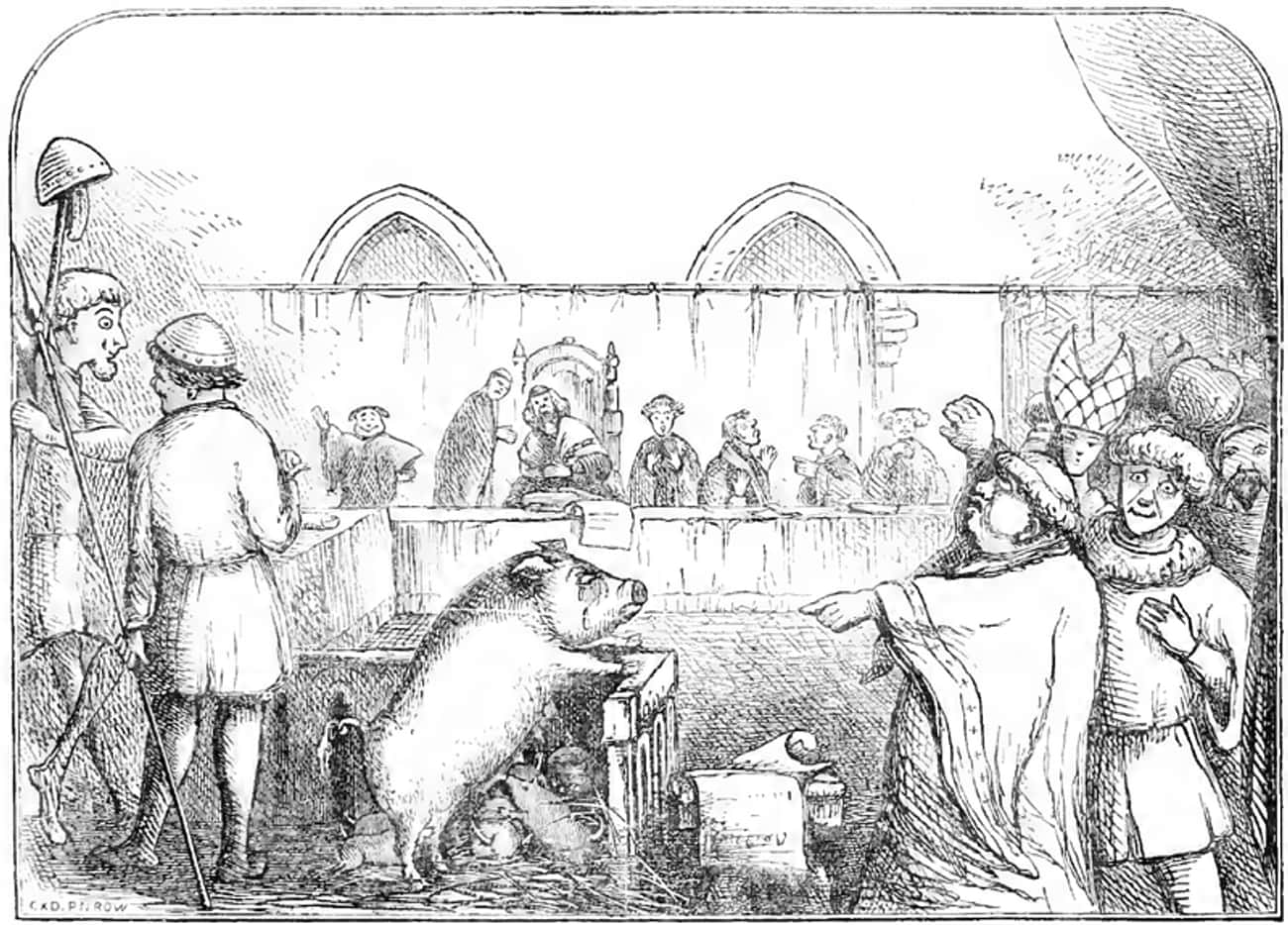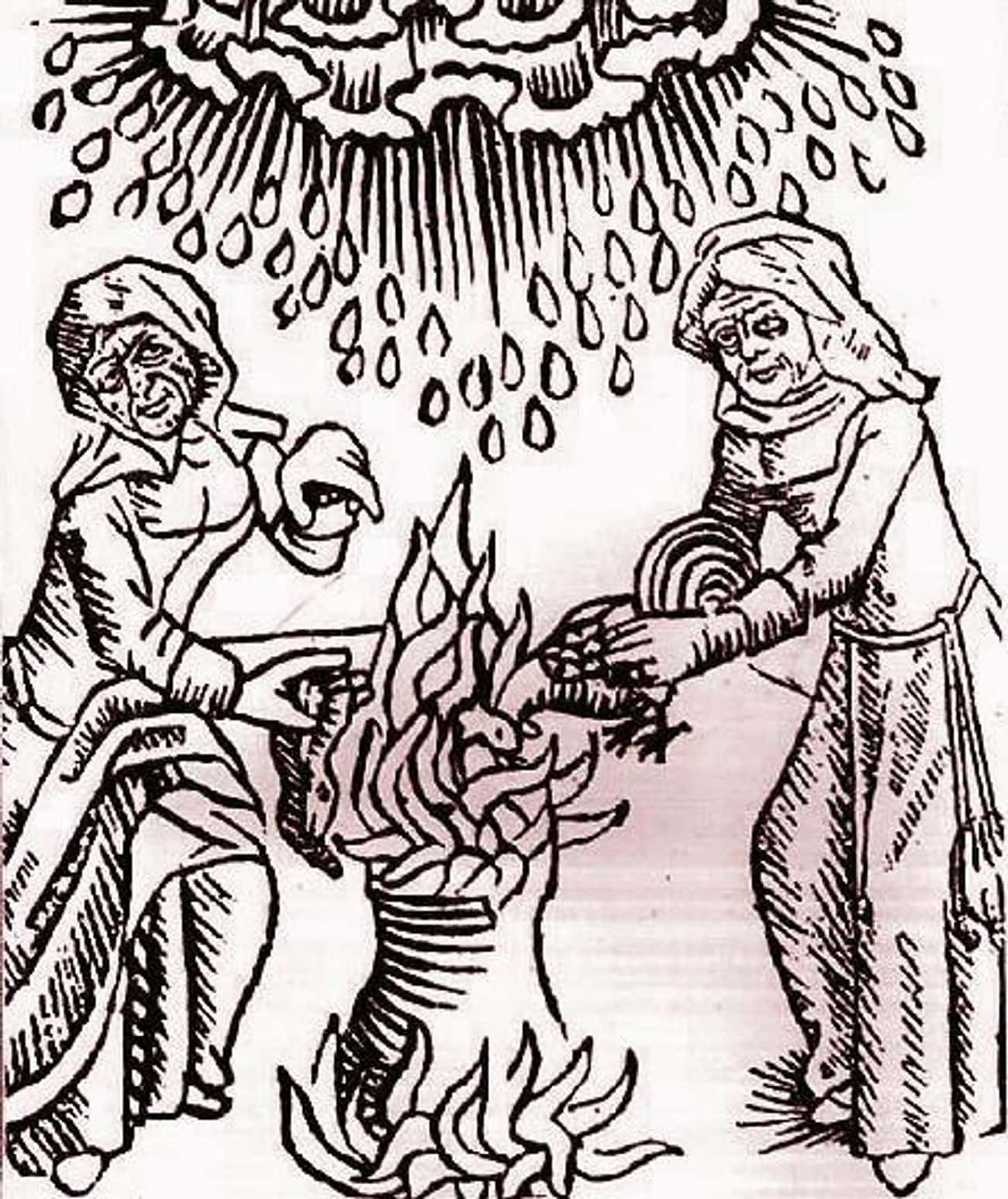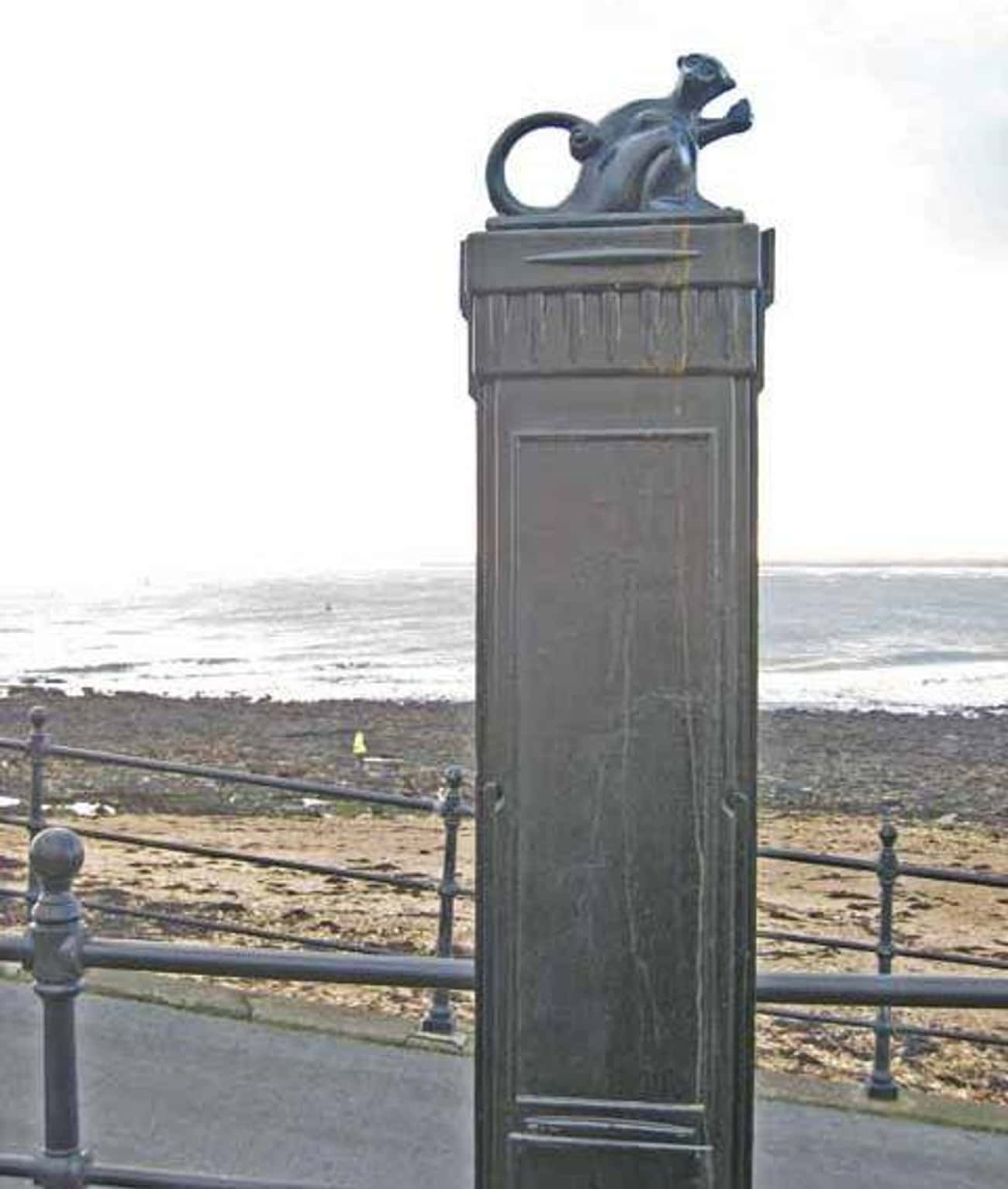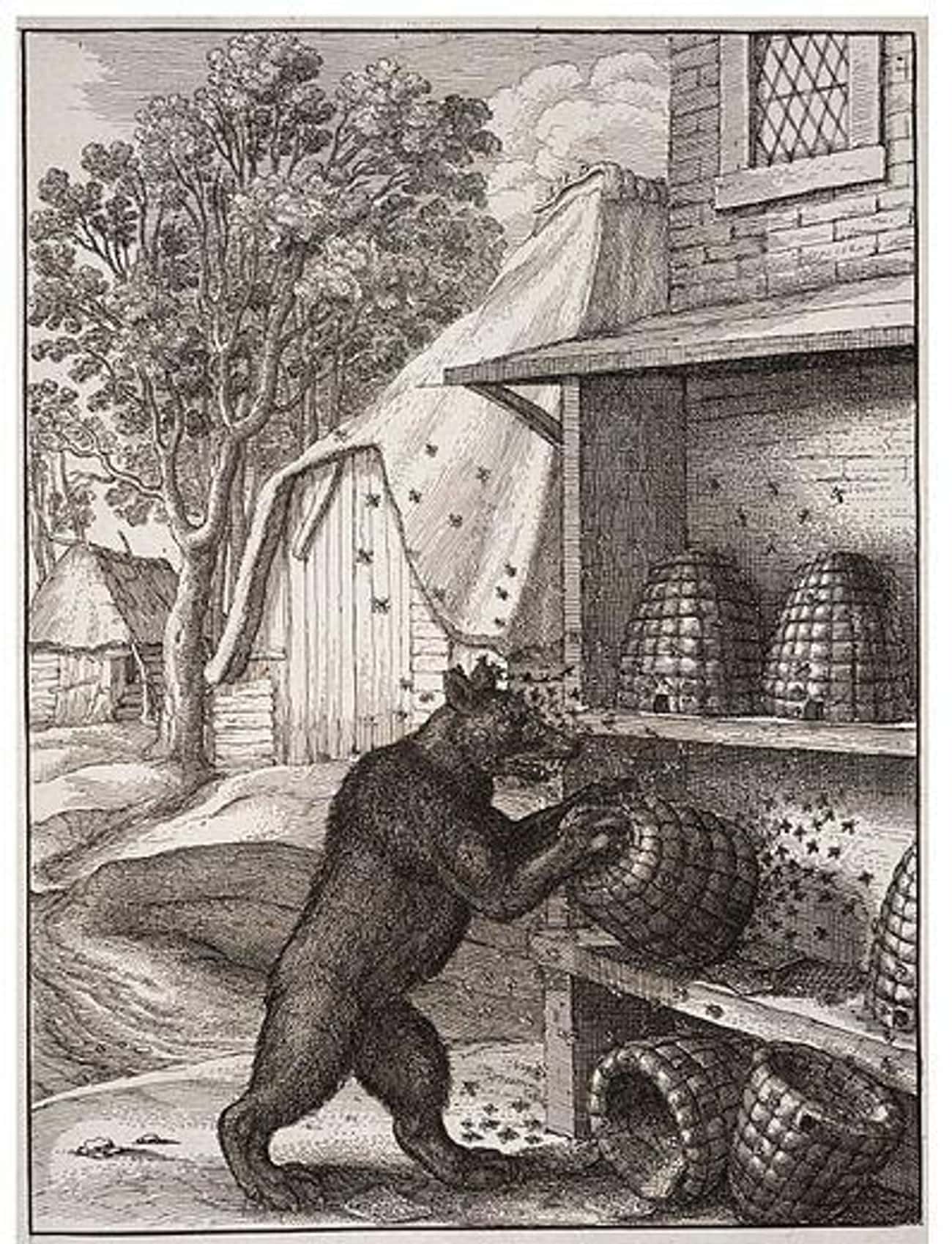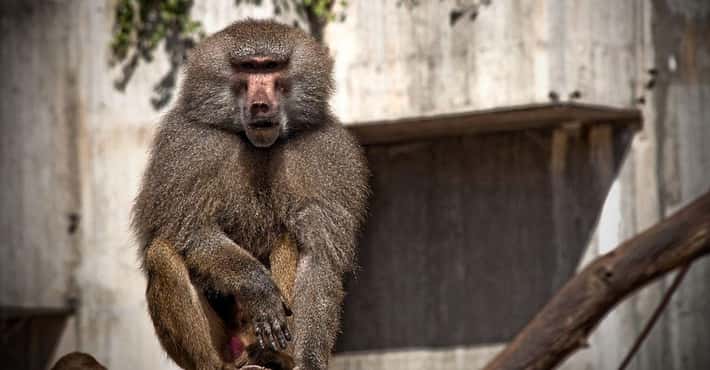The Most Bizarre Cases Of Animals Put On Trial
Although it may seem difficult to believe, people have accused animals of crimes and put them on trial for centuries. Possibly more surprising than the fact that people can sue animals in court is that this practice continues worldwide to this day. Medieval societies took the Greek idea of holding all living creatures and non-living objects accountable for any crimes they committed in an attempt to prevent demons from infiltrating their towns.
Some believed that beasts of burden fell under the jurisdiction of man since they were owned and controlled by them - in theory. Insects, snakes, vermin, and other wilder animals were sometimes tried in church courts since only God could judge and control them.
These are not cases of animals with owners who are taken to court in lieu of the creature. These are wild rats, insects, pigs, and other beasts, doing the things they are hardwired to do, facing imprisonment or the death penalty for inconveniencing humans. More horrible still, some faced trial and punishment for the wrongdoings of humans.
- Photo: Unknown / Wikimedia Commons / Public domain
Two Dogs Were Accused Of Witchcraft During The Salem Witch Trials
When people think of witches, they think of dogs. Or, they would if they knew about the two canine sorcerers accused of being in league with the devil during the 1692 Salem Witch Trials. However, neither dog was owned by or seen in the presence of a witch.
The first dog was owned by the neighbor of an afflicted girl in Andover, MA. The dog was accused of trying to bewitch her and was immediately shot. When the animal expired, the minister Cotton Mathers declared it innocent. One test of being a witch involved attempting to kill the accused. If they died, they were innocent. If they defied death, they were a witch. It was an imperfect system.
Another dog was said to be the victim of a villager named John Bradstreet, who was accused of “riding and tormenting the dog with his spirit.” The poor canine victim was dispatched in order to cause the alleged witch pain. Bradstreet did leave the village, though whether from fear or the death of his victim, no one knows.
- Photo: Gustave Doré / Wikimedia Commons / Public domain
Barthélemy de Chasseneuz Defended A Group Of Rats Accused Of Destroying Barley Crops
In 1508, a swarm of rats tore through the barley crops of Autun, France. The Episcopalian Church issued a summons for the rats to their local court to face the charges against them. If convicted of their crimes, the rats faced excommunication from the Episcopalian Church.
The lawyer appointed by the bishop to represent the rats was Barthélemy de Chasseneuz, and he took his clients' case as seriously as any other. When the rats did not show up in court and the judge attempted to try them in absentia, de Chasseneuz argued their right to defend themselves in court. He requested a summons sent to each defendant, which the judge granted. Multiple summonses were sent to neighboring towns and displayed close to the ground so that the rats could see them.
When the rats did not comply or arrive in court this time, de Chasseneuz stated that his clients feared for their lives. Dogs and cats were waiting to eat them when they left the safety of their homes to travel to court. After the judge's order to keep dogs and cats indoors failed, the case was largely forgotten and dropped.
- Photo: P. Mathews / Wikimedia Commons / Public domain
A Donkey Escaped Execution And Was Found To Be The Victim
Bestiality was seen as a mutual crime between the human perpetrator and their animal victim, usually resulting in the death penalty for both when a guilty verdict was reached. Jacques Ferron and his donkey victim lived in France in 1750 and faced trial for that heinous crime.
In a strange twist, Ferron received his punishment, but the donkey was spared due to credible character witnesses. The donkey was said to be “virtuous and well-behaved both at home and abroad and had never given occasion of scandal to [anyone].”
- Photo: Unknown / Wikimedia Commons / Public domain
A Pig Was Put On Trial For Attacking An Infant
In Falaise, France, it was common for large numbers of pigs to roam the streets, unhindered. On January 9, 1386, one of those pigs entered a home and mauled an infant in its crib, resulting in the child's death. The pig was swiftly arrested and imprisoned before receiving a trial in a court of law.
The pig defendant was found guilty and sentenced to have its forelegs “mangled and maimed” prior to receiving the death penalty. To add further insult, the pig arrived at its execution dressed in a waistcoat, gloves, and bottoms. The executioner also wore gloves, to keep his hands clean of the pig's death.
- Photo: Ulrich Molitor / Wikimedia Commons / Public domain
A Rooster Was Sentenced To Death For Laying An Egg
Basel, Switzerland, was a hotbed of witch phobia in the 13th Century due to Saint Thomas Aquinas and his influence on the Catholic Church to change doctrine and acknowledge sorcery and demons as real. One odd belief that made its way back into favor was that if a rooster laid an egg that was then incubated by a toad, the resulting offspring would be a cockatrice. This cockatrice was said to kill with just one look or breath.
When a rooster laid an egg in 1474, it was immediately seized and placed on trial for its heinous crime. The public defender assigned to the rooster did a commendable job, arguing that the egg-laying was an involuntary act with no ill intent behind it. Furthermore, no injuries had occurred to anyone. The judge disagreed, sentencing the rooster to die by burning alongside its egg. Science now knows that roosters that lay eggs are actually hens with a hormonal imbalance, hopefully sparing any future misunderstandings.
- Photo: Francis C. Franklin / Wikimedia Commons / CC-BY-SA 3.0
Katya The Bear Served 15 Years In Jail Before Being Released To A Zoo
Ekaterina, or Katya, the bear lived a rough life, traveling with a circus before being used as a roadside attraction at a campsite in Kazakhstan. In 2004, a boy approached Katya's cage and threw some food at her. She grabbed the boy's leg, causing him injuries and shock. That same year, a drunken man grabbed Katya's paw to shake it and was mauled. When all shelters and zoos passed on Katya, she went to prison with 730 dangerous human inmates.
For 15 years, Katya lived with the inmates without incident, enjoying the food they shared with her and their close companionship. The prison even commissioned a Katya statue that still stands outside. In 2019, Katya was released from prison and sent to live at a mini-zoo with another bear, Yashka, who she's able to physically interact with, as well as multiple other animals.
- Photo: Oliver Dixon / Wikimedia Commons / CC-BY-SA 2.0
According To Legend, A Monkey Was Executed For Being A French Spy
Hartlepool, England, supposedly had a French ship sink off of its coast, leaving no survivors, save a monkey dressed in a military uniform. Legend says that the people of Hartlepool suspected shenanigans and accused the monkey of being a French spy during the tumultuous time of the Napoleonic Wars.
The monkey stood trial but was unable to provide any information to the court. The villagers took the monkey to the town square and executed it. This is bad enough on its own, but some suspect that the “monkey” in the miniature uniform was actually a human child. Small boys worked as “powder monkeys”, priming cannons for the soldiers. Whether the residents sent a monkey or a young boy to his doom remains unclear, but the label “monkey hangers” follows the town to this day in soccer and rugby matches.
- Photo: PotMart186 / Wikimedia Commons / CC-BY-SA 4.0
Christmas Beetles Were Prosecuted For Decimating Crops
Christmas Beetles have been named in many criminal cases, infuriating judges with their audacity for centuries. In 1478, the insects also known as “cockchafers” were summoned to French court on the accusations that a witch sent them to destroy the church's crops. The judge ordered the beetles banished and allowed them to disagree with the judgment by appearing six days later to make statements. They didn't show up, and they didn't leave.
In 1479, the beetles faced charges of “creeping secretly in the earth” and were again banished for their crimes. The beetles continue to thrive in numbers to this day, defying the multiple court orders of the church.
- Photo: Wenceslaus Hollar / Wikimedia Commons / Public domain
A Bear Was Found Guilty Of Stealing Honey In Macedonia
A Macedonian bee farmer sought compensation from a bear who allegedly kept stealing his honey. After using flashing lights, loud “turbo-folk” music, and other ways to deter the bear, the farmer took the animal to court.
In March 2008, the court found the bear guilty of honey theft and ordered it to pay 140,000 denars ($3,500) for damage to the hives. Since the bear was part of a protected species and was wild, execution was off the table, and the state had to pay the fine.
- Photo: Uzair.saeed / Flickr / CC-BY 2.0
Weevils Were Involved In An Eight-Month Trial For Destroying A Vineyard
The winemakers of 16th-century France approached the church courts in 1545 with a complaint about the weevils destroying the vineyards in St. Julien. The ecclesiastical judge demurred from punishing the insects, instead telling the winemakers to repent for their own sins to drive the creatures off. Amazingly, this seemed to work.
In 1587, the insects returned to St. Julien to continue the decimation of the vineyards. The church court was again involved and the trial this time spanned eight months. The defense argued that weevils were allowed to do what they were made to do - eat crops. A plea deal involving a weevil sanctuary was proposed by the mayor of St. Julien, but the last page of court records was eaten by an insect.


